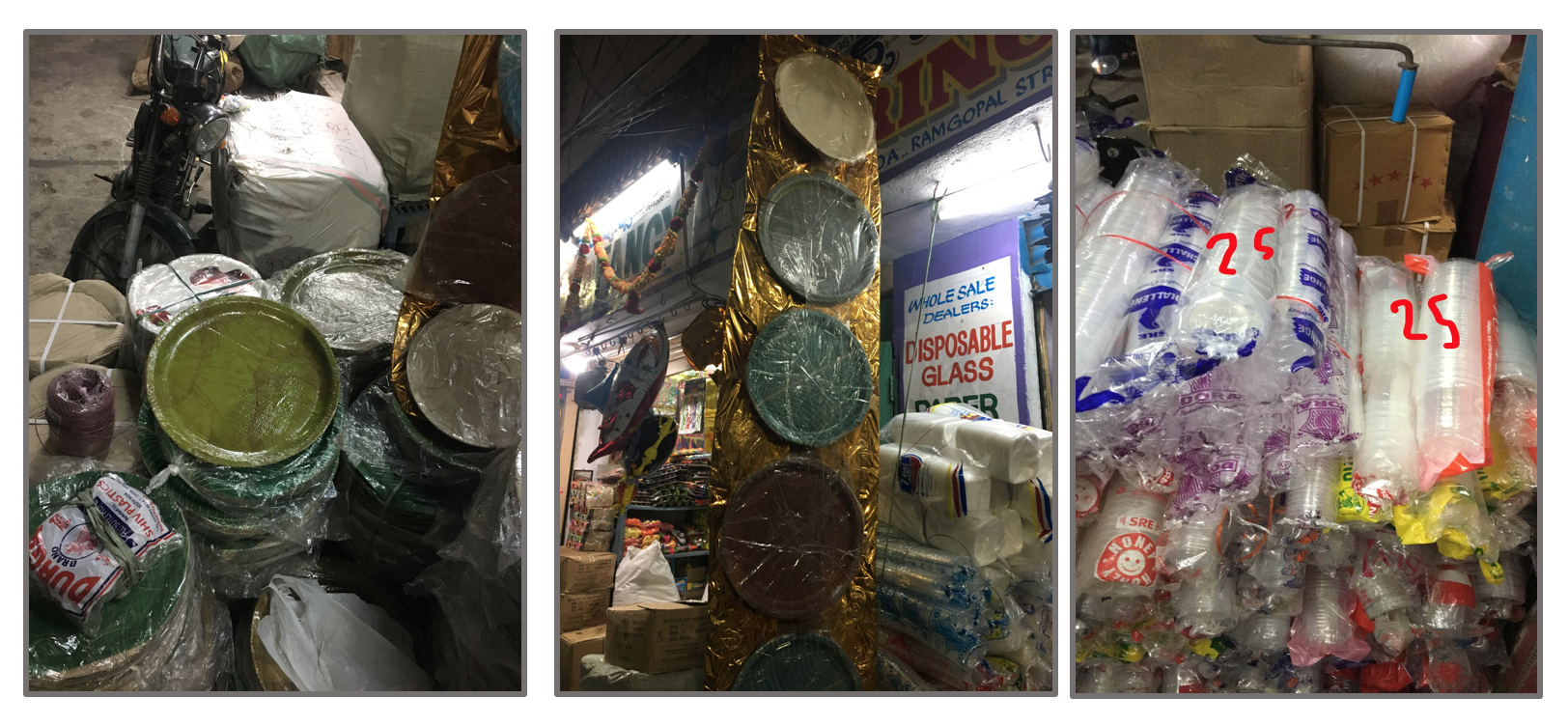Coming out of college, it was intimidating to know that I only had 6 months of free time before I began my real job. It was reassured by the fact that everyone after graduation kept saying, “This is the only time you’re going to get to do this kind of stuff”.
So I told myself - in these 6 months, I’m going to build something of value. Hopefully one takes off and I find myself doing something that I love.
I felt incredibly stressed that it was now or never - the only free time I’d ever have in my life before becoming stuck in the corporate world. I was obsessed with the idea of starting a venture. And if the post title didn’t give it away, none of them worked.
Product Creation Methodology
Having experience as a PM Intern before, I did pick up a few things about validating my product before I invested time on something. Products are the things that I validate, and projects are the ones that I don’t. I was obsessed with delivering a product - and unlike projects that also means making money.
The general flow for product validation goes like this:
-
Problem Hypothesis - Why do I think people need this. Are the pain points I think they have valid?
-
Ask a lot of open ended questions that are targetted at validating your hypothesis.
-
Determine the best solution to build based on their feedback and my expertise.
Event Chat
I started my time off by going after my first venture - Event Chat. The hypothesis behind Event Chat was based on a previous project we had done at a hackathon.
Hypothesis
If we build an event organization system that can help improve communication between attendee and organizers and building an effective communication channel, it could improve the overall attendee experience.
I interviewed a little over ~10 people from varying event groups to validate my idea. A few were hackathon organizers, some from LinkedIn, and a few others who directed large corporate events. The results of my interviews were promising. A problem definently existed with the common methods of using slack or post-event surveys.
However, as I began to build my app, I began to lose the amount of motivation that I had on day 1. Part of it was the sheer grandiosity of what I wanted to build and the slow cadence at which I was delivering on that vision. There was no easy way to quickly validate my solution.
Before, I could really think about the project goals again, I had to leave to India. I never came back to complete the project.
Lesson learned: If you’re working by yourself - try to focus clearly on the MVP and set clear expectations for what you want to deliver. Try to validate your idea cheaply if you can.
Time in India
My trip to India was not unplanned. I try my best to visit at least a year to see my aging grandparents. Usually these trips are not super exciting, but I still had the mindset that I had to build something. So as I was in India, I was constantly trying to hunt for problems.
What can I build that people would pay for? Is there an opportunity to do something here? There might be a way to cash in on the mobile-first revolution in India.
Digital Lorry Dispatch
Instead of focusing on the tech and things that were applicable to me - I began to look outward and at different industries.
Along the way, I made a new friend, our car driver - a previous lorry owner. If you don’t know what that is - here’s an image:

Through him, I learned about the trucking (lorry) industry in India. Most drivers tend to operate as individual business owners. They get their assignments through various dispatch offices placed in every major city. Drivers visit these offices to get their next transport jobs.
If an online based system to share and communicate among drivers and vendors existed, we could phase out an old age dispatch center to enable lorry drivers to earn more and cut out the middle-man. Yeah, disruption!
So I set off by interviewing lorry drivers and dispatchers across the city to test my question. However, very quickly, I realized that I was not welcome in this market. As I kept interviewing drivers in the area, I learned of a few secret functions that dispatch offices provide:
-
Local language - India does not have one unified language. Lorry drivers that have to travel across India rely on dispatch offices to have mutli-lingual individuals that can translate and describe their next assignment.
-
Bribery - When goods are transported across state borders, it not uncommon for them to get checked. It is possible that if your documents are no good - the good are seized. As the middle-man and owner of the transport job, the dispatch office steps in and cuts a deal on the driver’s behalf.
-
Uneducated - Most lorry drivers did not own smartphones. Access to computer is also not very common. So a web-based system might only address a small portion of the market. A telephone service might work, but the operation costs of such a service could be much higher.
Given the time frame I had, this one didn’t take too long to scratch off my list.
Lesson: Always do thorough research. Don’t just do something because you believe it can be disruptive. Validate that a real pain point exists
India is Independent
The amazing part of India is that almost every store is independently run. There is no Walmart or Target like retailer that runs the entire country - most services and items are sourced independently.
So far, I was only focused on building technology. However, it was clear that wasn’t the only way to make money. Just taking a look at the shops around, it seemed that money could be made outside of technology. So, I started looking at opportunities that were more industrial and not super technical. That took me to my next venture.
Bagasse (Sugarcane) Plates
If you’ve ever eaten food alongside the streets of India, you’ll realize that the quality of Indian made disposable cutlery is extremely poor. Knowing how things were on the “other side” of the world, this was a stark difference.
I would observe people try to keep their plates down in the wind, layer plates to absorb water and balance them in their hand as they stood up.
Conveniently, knowing, of this problem beforehand, I took a few plates from America which I used to get user feedback. People loved them.
So that’s right - I travelled thousands of miles away to sell paper plates. Of course, I had no clue how to begin infiltrating the disposable plate industry - so I started with my competetitors.

In India, disposable plates aren’t always made from paper - they can be made from banana leaves, palm trees or laminate cardboard. Pricing was key in this market.
However, as I looked deeper into building paper plates in India - it was clear that the problem wasn’t a lack of labor or machinery - it was the paper itself. Paper comes in different grades and thickness. The paper in India isn’t like the type back home. So better paper plates weren’t really an option - unless we import them.
So I started looking for alternate materials. That’s when I came across a different type of material for plates. There was a material called Bagasse - or sugarcane waste - and it could be used to generate paper pulp. It was the key to a better plate.
This material was already being used in the Indian cities up North - but not in the South. A proven business model right?
I started reseaching where I could source Bagasse near my home state. I used the Indian version of Alibaba to call a few existing suppliers and learn about the industry. I even tried weighing the cost of importing these plates from Northern India.
However, the I soon began to dig deeper on a spreadsheet and looking at the costs asscoiated with each manufacturing method, one thing became very clear - it would take years to recoup the initial investments and achieve markets of scale. For a non-resident of India, this wasn’t a good venture to invest in.
Lesson learned: Run through business model simulations - just because a problem exists doesn’t mean that it will make money.
Why Even Solve Problems?
As I prepared to travel back to the US - I was pretty tired from my endless circle to build a product. It started as a journey to solve problems with tech and then slowly evolved to solving any problem.
However, upon my tours in India and seeing different street vendors, it made me think that we could make money as long as we sell things that people want to buy. But as I looked back at all the things I spent money on during my trip - the things I purchased didn’t really solve any problem. They were just “cool” things.
And so, that leads to my last venture - the least technical of all.
Engraving iPhone Cases
My final venture was just about turning profits. If bagasse plates taught me something - it was that I should be looking at an industry where I could sell products at least 3x my intial material cost. That’s how we should be thinking about hardware, breaking even and turning a profit. Take a look at iphone margins - made for about $300, but sold at $1000.
As I travelled back to the United States - a new idea was buzzing in my head.
If I offer exotic wooden phone cases with an ability to do custom engravings such as customer names and fancy designs, then I will be able to move hundreds of cases and turn profit
In bulk, wooden phone cases can be bought at $5 and can be resold at $20. That’s a 4x profit marging. The only up-front investment was a laser engraving machine - which is around $400. Almost too good to be true, by selling just 20 cases I could break even. Every phone case I sell could buy me a lunch.
So I began my negotiations with sellers on Ali Baba. Turns out I kind of have a knack for this thing. I found it exciting to find and negotiate with suppliers to figure out my supply chain model. I also had some experience with this previously after talking to bagasse suppliers.
So, after some back and forth - I followed through. I bought a 100 wooden iphone cases. I ordered and assembled a laser engraver from Amazon and I was open for business. The rest is history.
. . . . . .
Fast forward a few months later and I sold 2. Today, I still have an inventory of about 98 cases. (Please buy one). My seller from China still messages me to this day asking if she needs to send me more cases to restock - little does she know that I’ve yet to make a single sale. Part of it was that I was too afraid to be a salesman.
I just wasn’t proud of what I was selling. And if you had read previously, my real passion lies around solving problems.
Lesson: Sales are everything to a product. Make sure that you can really stand behind your product and advocate for it
A restless journey
So that was it. At the end of my journey, I didn’t end up with a shipping product. I learned a few lessons and was left with an interesting story to tell.
(There was a 5th venture as well. You can reach out to me if you want to learn more about it)
I was knowledgeable enough to perform user validation - but that wasn’t enough to avoid the other common startup pitfalls:
- Don’t try to do everything by yourself
- Not understanding the market
- Pricing alone doesn’t yield profit
- Poor Marketing
I was glad I was able to learn the lessons I did in such a short period of time with relatively low cost. I’m fairly sure that I’m going to take a break from building products for now. However, I will still keep pursuing projects.
I will keep looking for opportunities to build something awesome in the future and really make people happy. Moreover, I’d love to do it with a team in the future instead of a solo venturer.
Along my journey - I realized that the customer, or who I am building for, is who I care about the most, and really empathizing with their pain point is what should keep me going.
Start-Up vs Small Business (2019)
After having learned a few new things - I wanted to revisit this post. I started with these high risk ventures and continued to minimize risk by picking smaller and more niche ideas. It started to become about safe returns. At some point, I was intimidated to think bigger. This was an excellent quora answer that opened my eyes into why I was feeling that way.
It was more exciting for me to work on something that reaches a lot more people, than just a tiny accessory. This is probably why phone cases never excited me as much as disrupting the lorry transport industry
